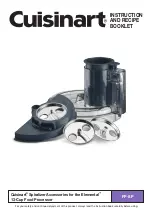
PG7000™ OPERATION AND MAINTENANCE MANUAL
© 1998-2008 DH Instruments, a Fluke Company
Page 182
5.3
PISTON-CYLINDER MODULES
5.3.1
DISASSEMBLY, CLEANING AND MAINTENANCE
PURPOSE
To disassemble and reassemble piston-cylinder modules and clean the piston-cylinder
elements when necessary.
PRINCIPLE
PG7000 piston-cylinders are high precision metrological assemblies. The annular gap
between the piston and the cylinder is adjusted to be less than 1 micron, and in some cases,
less than 0.5 micron. In normal operation, this space is lubricated by the pressurized medium
(except PC-7200 in which the piston-cylinder modules are gas operated but the space is
lubricated with a liquid). If the space becomes contaminated, usually due to foreign matter
carried by the pressurized medium, PG7000 performance can be affected. Symptoms of
contamination of the space (a
dirty
piston-cylinder) include:
•
Difficulty rotating piston:
The motorized rotation system (if present) is unable to start
piston rotation.
•
Decay in rotation rate is more rapid than normal:
Piston rotation slows down too
quickly, especially at low mass loads.
•
Poor sensitivity:
Very small mass changes do not have usual effect.
•
Noisy pressure:
The pressure defined when the piston is floating is not a stable as it
usually is.
If any of these symptoms are present, they
may
be caused by a
dirty
piston-cylinder.
The piston-cylinder module should be disassembled and the piston-cylinder cleaned. See
Section 5.3.2.1 for instructions and disassembly and cleaning of gas operated, gas lubricated
piston-cylinders (PC-7100 and PC-7600), Section 5.3.2.2 for gas operated, liquid lubricated
piston-cylinders (PC-7200) and Section 5.3.2.3 for oil operated piston-cylinders (PC-7300).
Gas lubricated piston-cylinders (PC-7100 and PC-7600) are highly sensitive to
contamination, much more so than liquid lubricated piston-cylinders (PC-7200 and PC-7300). When
using gas lubricated piston-cylinders, if symptoms of contamination develop rapidly with
operation after cleaning, there is almost certainly a source of contamination within the PG7000
system. This source must be identified and eliminated to reduce piston-cylinder cleaning
frequency. Very often, the source of contamination is the test gas supply itself (which contains
humidity or lubricating oil) or it is the return from unclean gas operated DUTs that are connected
to the PG7000 system.
Gas operated, liquid lubricated piston-cylinders (PC-7200) can exhibit behavior similar to
that of a dirty piston-cylinder when they are operated without lubricating liquid in the piston-
cylinder module reservoir. Before disassembling a PC-7200 piston-cylinder module for cleaning
due to poor performance, try filling the lubricating liquid reservoir (see Section 5.3.3).
















































